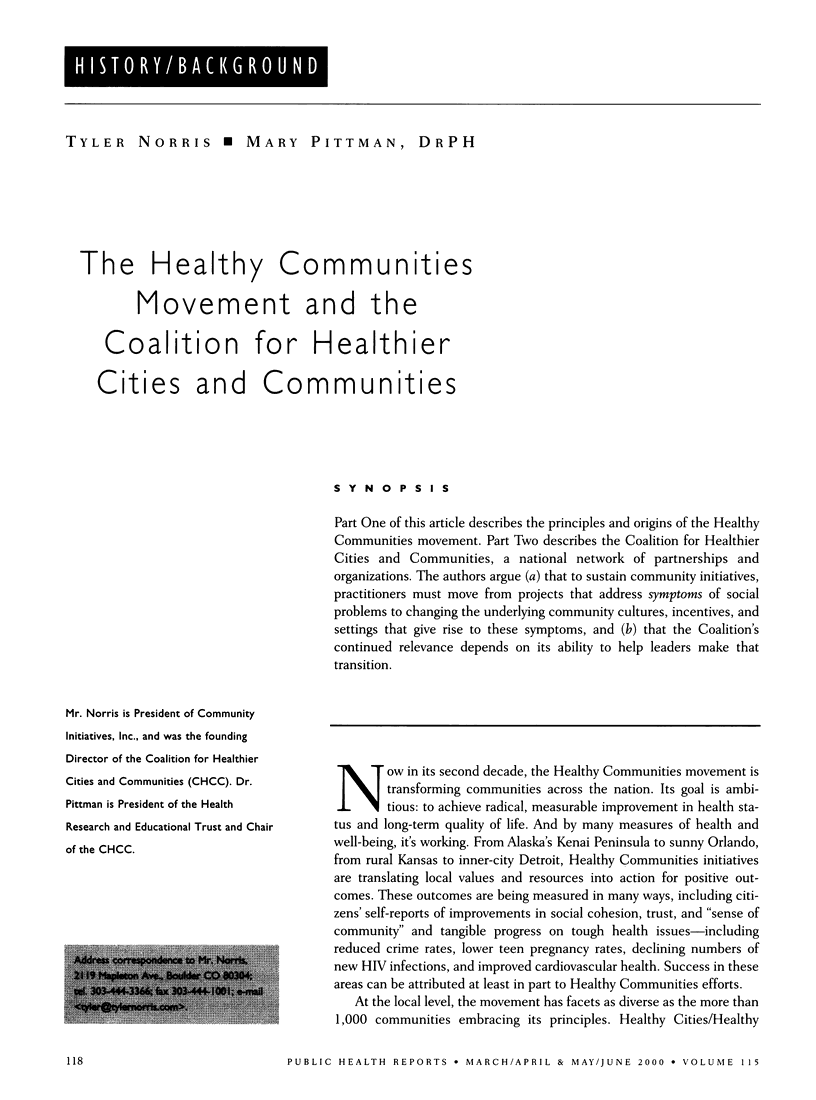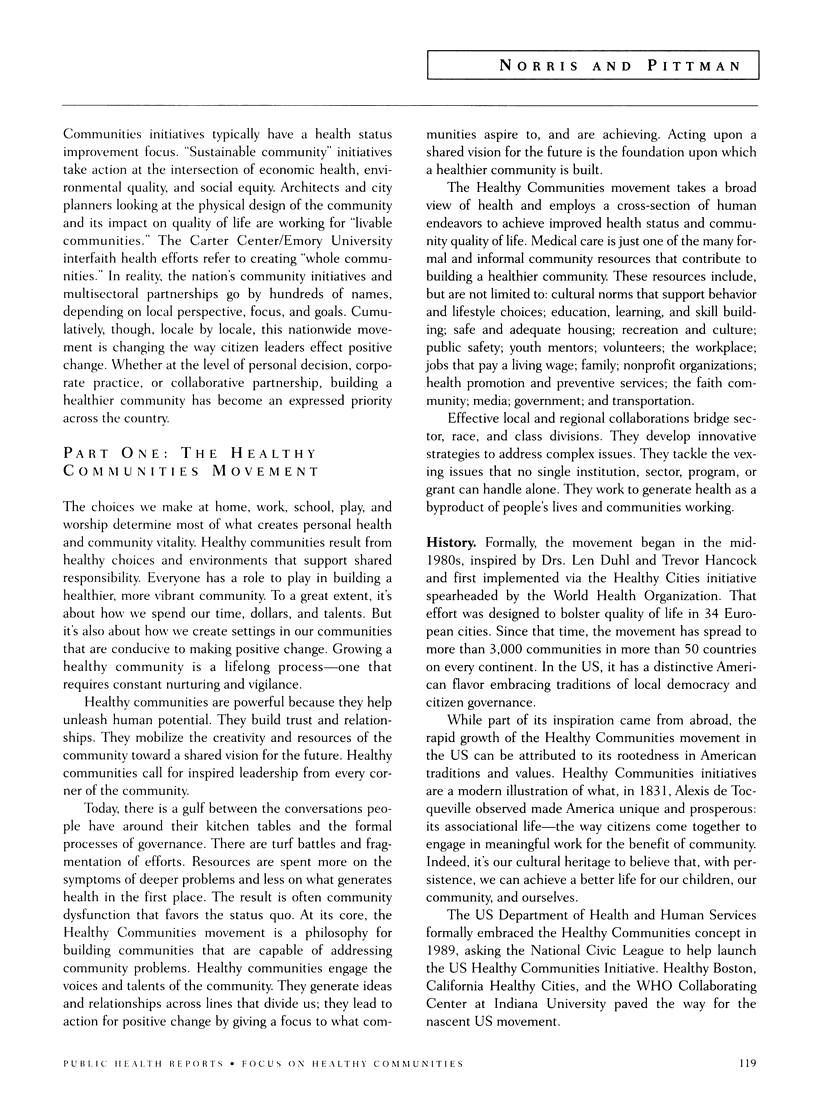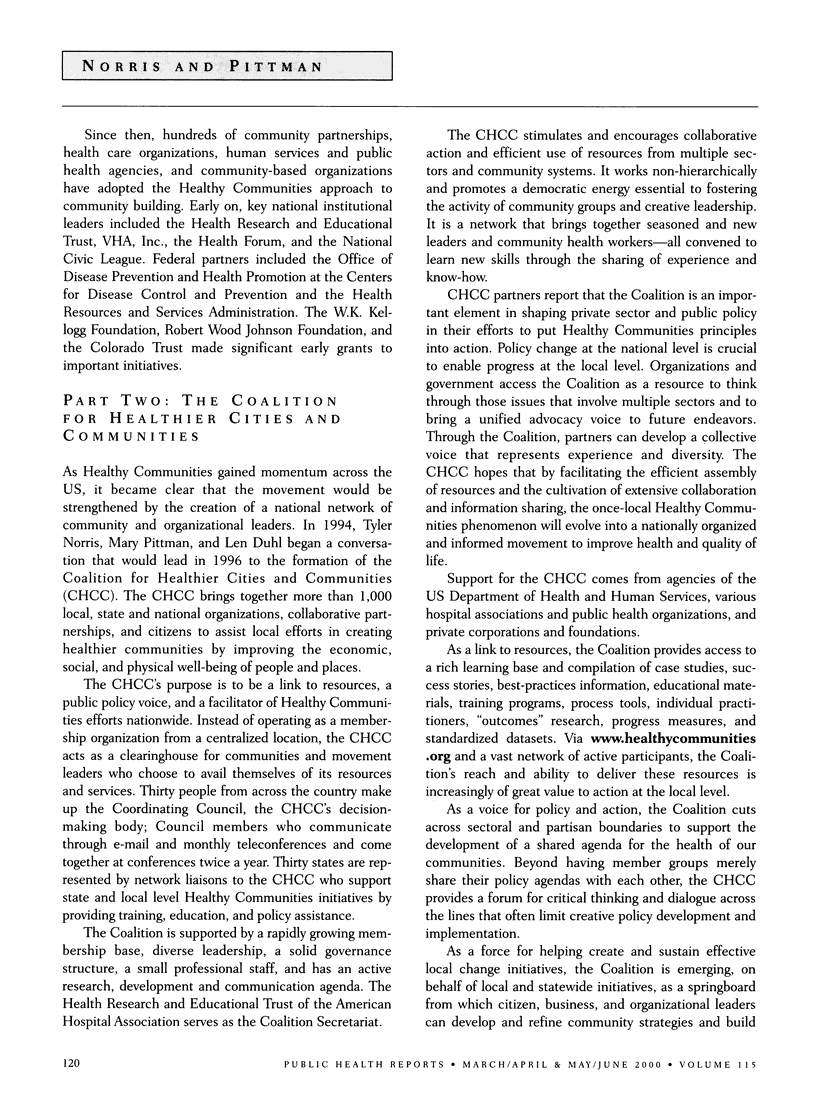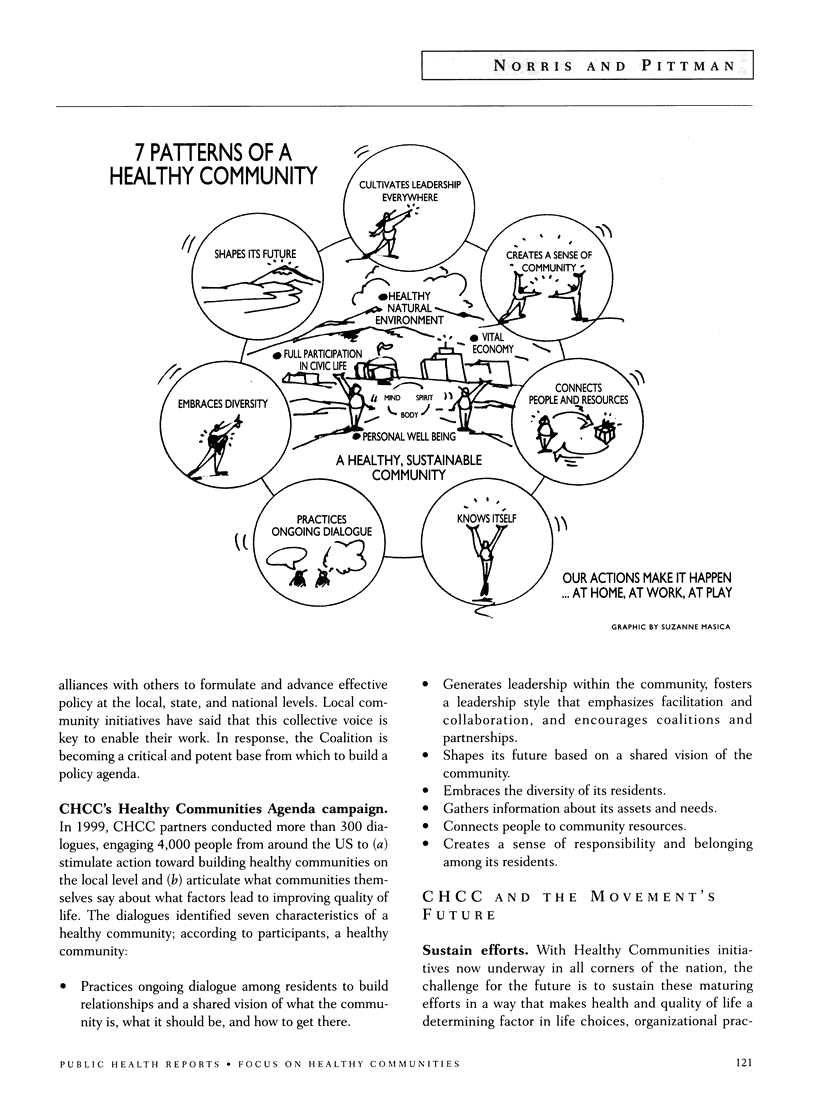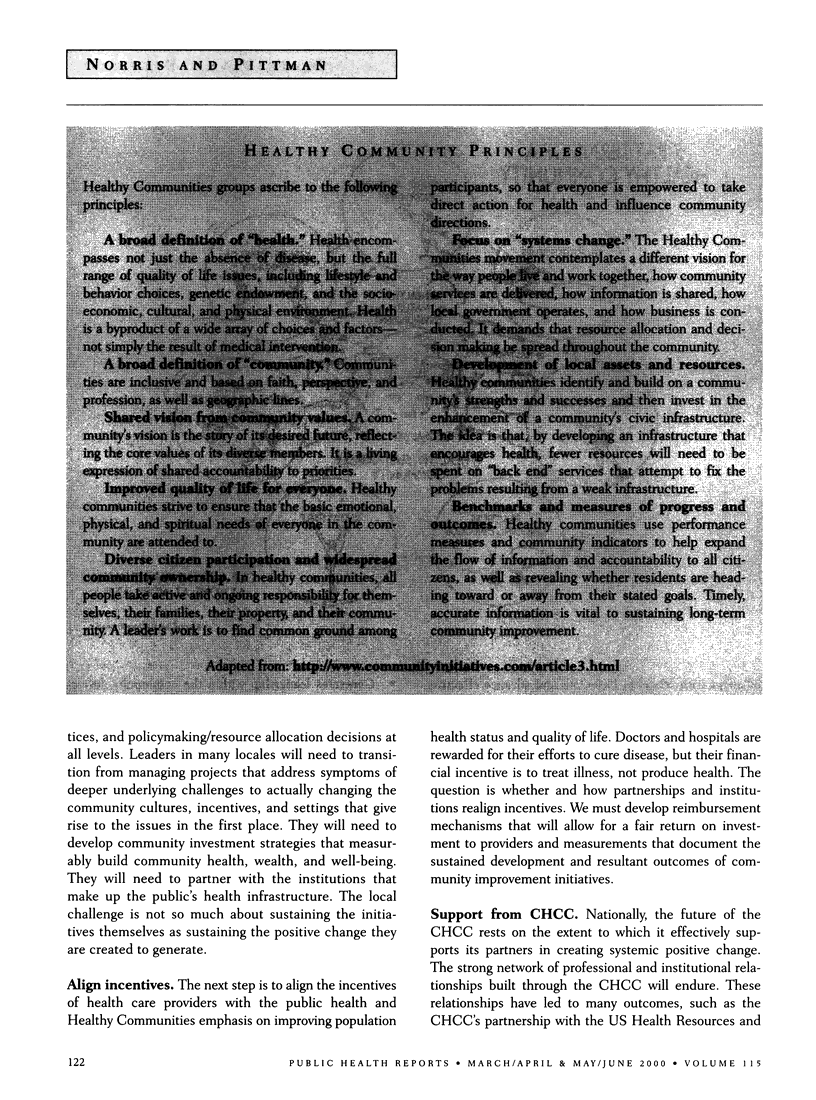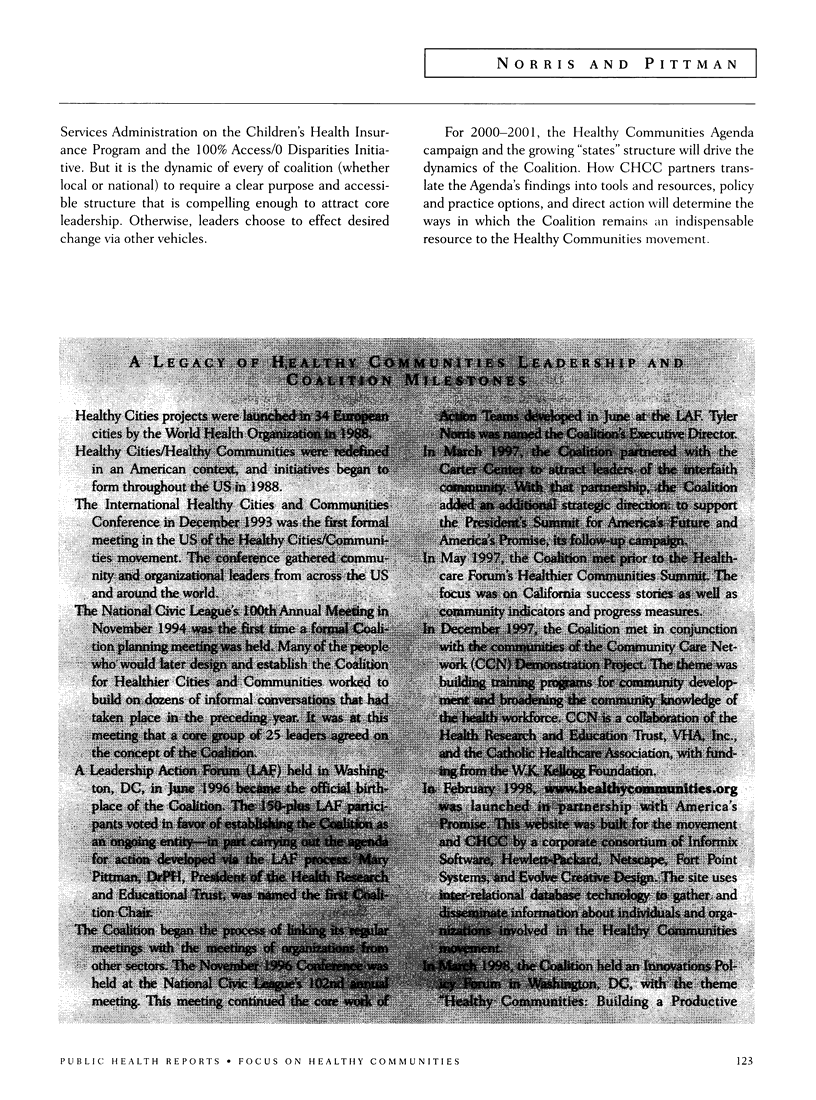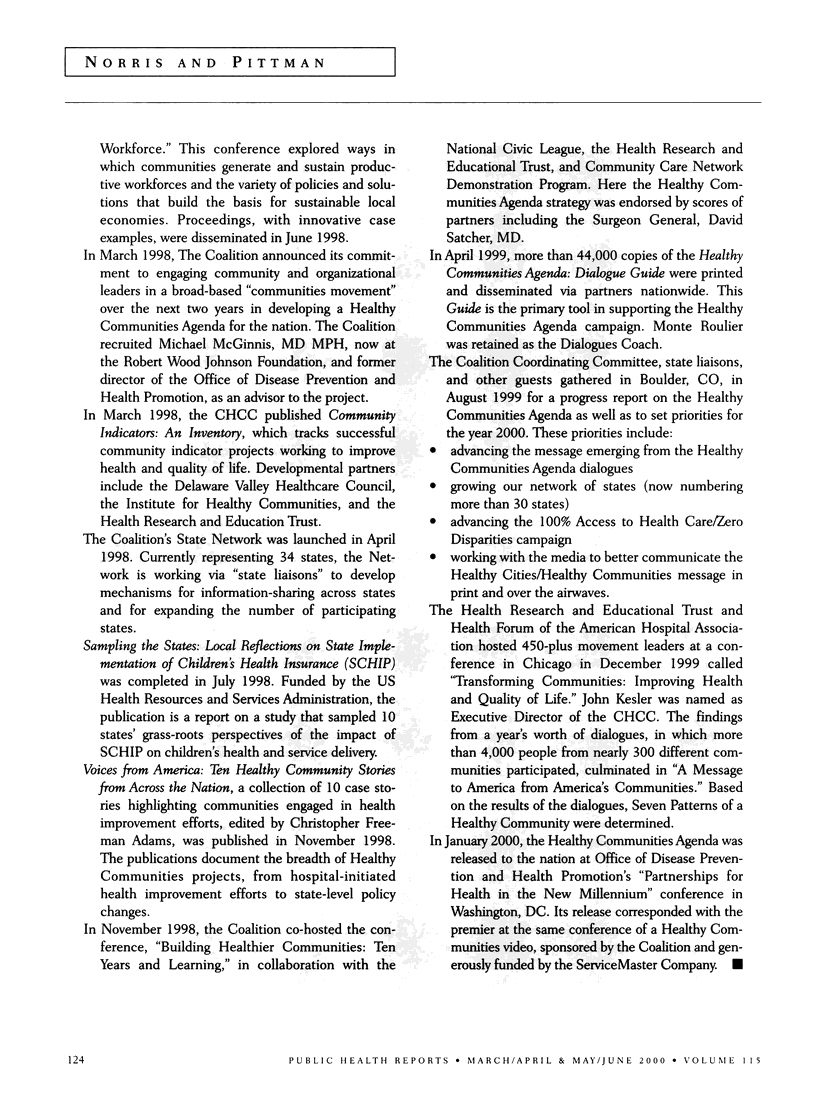Abstract
Part One of this article describes the principles and origins of the Healthy Communities movement. Part Two describes the Coalition for Healthier Cities and Communities, a national network of partnerships and organizations. The authors argue (a) that to sustain community initiatives, practitioners must move from projects that address symptoms of social problems to changing the underlying community cultures, incentives, and settings that give rise to these symptoms, and (b) that the Coalition's continued relevance depends on its ability to help leaders make that transition.
Full text
PDF